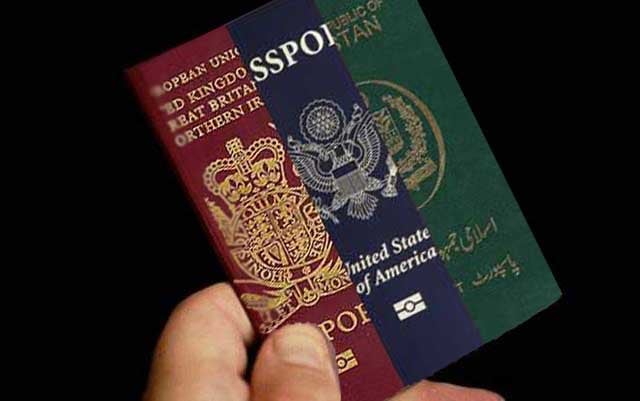KARACHI:
As global trade recalibrates under a renewed wave of protectionist policies, Pakistan faces a defining moment in its economic diplomacy. The recent imposition of reciprocal tariffs by the United States, announced under Trump 2.0 regime, has introduced significant headwinds for Pakistan’s export sector.
Specifically, Pakistani goods are now subject to a 29% tariff when entering the US market, a retaliatory measure responding to what the US claims is a 58% effective tariff on American goods, inclusive of non-tariff barriers (NTBs). With the tariff situation in a state of flux, Trump has authorised a 90-day pause on the tariff to negotiate with the non-retaliating countries.
The implications are profound. The United States remains Pakistan’s largest export destination. In 2024, exports to the US stood at $5.47 billion, representing 17% of our total exports and yielding a substantial trade surplus of $3.33 billion.
However, this trade relationship is heavily imbalanced, with 77% of Pakistan’s US-bound exports composed of textile and textile-related goods. This sectoral concentration renders the country particularly vulnerable to tariff hikes and other external trade shocks.
Sectoral vulnerabilities
The 29% US tariff poses a direct threat to Pakistan’s competitiveness in key markets. Compared to India (26%), Bangladesh (37%) and Vietnam (46%), Pakistan’s rate may seem moderate, but its impact is no less consequential. The textile industry – long the mainstay of Pakistan’s export economy – is now in danger of price erosion in the US market.
A closer examination reveals that the tariff burden is uneven across sectors. Pakistan’s textile yarn and thread, for instance, face a tariff hike of 17.73 percentage points, a significant increase that undermines its relative competitiveness. While sectors like sports goods and plastics have seen minimal increases or even marginal improvements in tariff terms, they currently account for only a small fraction of Pakistan’s exports.
In essence, the country is exposed at its most vulnerable point. Compounding this challenge is the country’s declining export trend as exports to the US fell from $6.56 billion in 2022 to $5.47 billion in 2024. In comparison, India and Vietnam recorded robust export growth during the same period – India’s exports to the US rose to $91.23 billion in 2024 and Vietnam’s exports surged to $142.48 billion.
These numbers highlight not only the increasing competitive pressures from the region but also Pakistan’s need to undertake urgent trade and economic reforms.
Recouping missed opportunities
While regional counterparts like Vietnam and Bangladesh have managed to redirect trade flows to their advantage during the past US-China tariff skirmishes, Pakistan has often failed to capture such redirected demand. In fact, during earlier episodes of trade diversion, Pakistan’s exports to the US declined even as regional competitors gained market share.
This disconnect is rooted in longstanding structural inefficiencies – underdeveloped logistics infrastructure, high energy costs, inconsistent policies and a narrow industrial base. Moreover, Pakistan’s overuse of Statutory Regulatory Orders (SROs) and opaque trade practices have drawn criticism from global trading partners, adding layers of unpredictability for international buyers and investors. The increase in retaliatory tariff on China may create further opportunities for Pakistan as many US manufacturers must be working very hard to find cheaper offshore options, preferably in any low-tariff countries.
To mitigate the ongoing tariff challenge and fortify its position in a volatile global trade environment, we must undertake a series of strategic and targeted interventions with following areas to explore at length.
Pakistan should consider revising its tariff policies, particularly for US imports, to encourage reciprocal concessions. This could involve aligning tariffs with international best practices and reducing duties on essential raw materials and intermediate goods that are critical for domestic industries.
I have highlighted the importance of getting out of our comfort zone and explore new markets and subsequently reduce our dependency on the US and textile-centric exports. New and emerging markets in Central Asia, Africa and Latin America offer untapped potential. Strengthening existing ties with China, the Gulf states and Asean can also create new trade corridors.
A major obstacle for exporters is Pakistan’s complex and often inconsistent regulatory environment. Streamlining customs processes, digitising export documentation and reforming the SRO regime can enhance transparency and investor confidence. This would also address some of the non-tariff barriers flagged by the US in its tariff assessment.
Pakistan must intensify diplomatic efforts with the US to negotiate sector-specific exemptions or a return to preferential schemes such as the Generalised System of Preferences (GSP) established by the Trade Act of 1974. Coordinating with countries similarly affected, such as Bangladesh and Vietnam, can help present a united front at platforms like the World Trade Organisation (WTO).
The government should prioritise productivity-enhancing investments in manufacturing, infrastructure and human capital. Special attention must be paid to emerging sectors like medical equipment, plastics and food processing, which show relative tariff advantages and global demand potential.
The US claims a 58% effective tariff on its goods entering Pakistan, inclusive of 14 categories of NTBs. Pakistan should launch a comprehensive review of these barriers and work towards regulatory alignment with international standards. Simplifying trade procedures will not only ease tensions with the US but also benefit exporters across the board.
The trade friction stemming from the US protectionist policies is undoubtedly a challenge, but it also offers a strategic inflection point for Pakistan. The country must choose whether to continue relying on a limited and vulnerable export basket or to invest in a broader, more resilient economic architecture.
By aligning domestic policies with global standards, engaging in smart diplomacy and focusing on competitiveness, Pakistan can not only weather this storm but also emerge with a stronger, more diversified trade foundation.
The writer is a financial market enthusiast and is attached to Pakistan’s stocks, commodities and emerging technology



